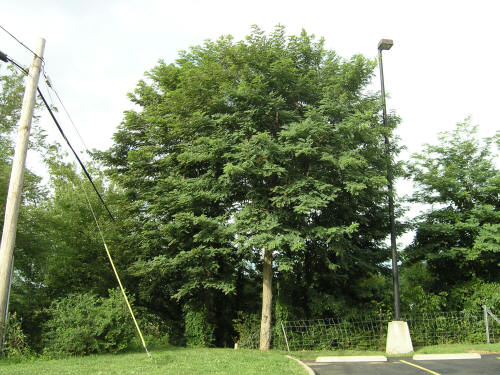Black Locust
Black Locust
Robinia psuedoacacia
Fabaceae (Legume Family)

▲ mature tree
▲ mature, flowering tree (pink flowers)
flowers and bark of pink-flowered cultivar ▲
leaves ▲

▲ fruit pods
'Globe' black locust cultivar ▲ ▼
Robinia psuedoacacia: Black Locust
Location on campus: in west end of retention basin, along alley running to Kings St. (regular species, not globe form)
- leaves deciduous, alternate, pinnately compound leaf 6-14 inches long, with 7-19 ovate leaflets with rounded tips; leaflets 1-2 inches long and 1/2 as wide; dark green to blue green above and lighter green, hairless underneath
- stems slender, red-brown to green-brown or tan, angled, with short, curved thorns at nodes on juvenile growth
- bark is light gray brown and deeply furrowed with age
- grows 30-75 feet tall and wide in upright, oval crown; often forms colonies from sprouts from roots
- flowers are creamy-white to pinkish-white, pea-like, about 1 inch diameter, in racemes that are 4-8 inches long; fruit is a flattened, brown pod about 2-5 inches long
- prefers full sun and well-drained soil; fairly soil adaptable except to wet soils
- medium to fast growth rate
- wood is very decay-resistant; was used for fenceposts
- native to Missouri
- cultivar 'Umbraculifera' is the grafted Globe Locust used in landscaping